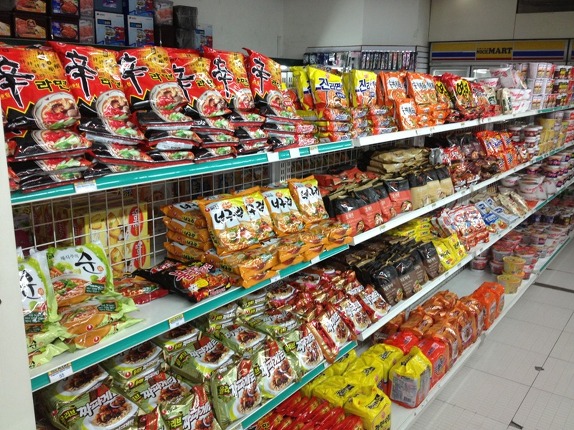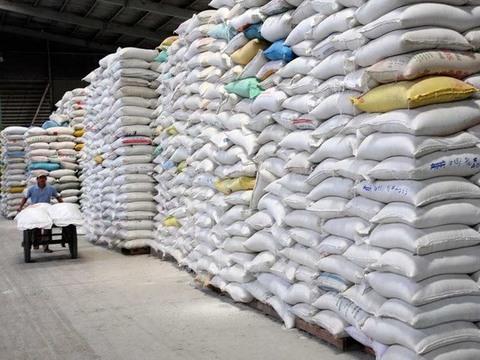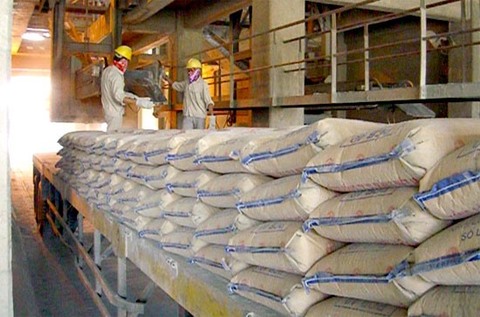Major food makers strive to increase revenue from instant noodle
Major food makers strive to increase revenue from instant noodle
As instant noodle sales bounce back in Vietnam, major food makers continue to employ different strategies to diversify income and capture new growth.

As previously reported by VIR, Vietnam ranks fifth in global instant noodle consumption with 5.06 billion packets sold in 2017, up 3 per cent against 2016, according to new figures from the World Instant Noodle Association (WINA).
Junichi Kajiwara, president of Acecook’s subsidiary in Vietnam, attributed the rebound to positive changes in Vietnamese consumers’ perspective on instant noodles. In a bid to increase demand among consumers, Acecook aims to diversify its product portfolio with healthier and more value-added products, such as rice noodles and instant noodles with added nutrients.
He highlighted that instant noodle products in the form of cups, bowls, and trays will pick up momentum in the coming time, especially in big markets due to their convenience and versatility. Acecook plans to increase sales in this product category, in addition to improving the total instant noodle consumption in the market.
“The cup noodles only amount to five per cent of Acecook’s total sales in 2016. This figure is projected to double this year. Acecook will increase cup noodle consumption to make up 20 per cent of the instant noodle industry,” he told VIR.
As the leading instant noodle manufacturer in Vietnam, Acecook currently operates 11 factories and six branches across the country, with a total investment capital of VND3.7 trillion ($159.1 million). In addition, Acecook exports products to more than 40 countries around the world with a plan to increase its export volume by 200 per cent over the next three years.
Meanwhile, Masan Consumer boasts of a 22 per cent market share of instant noodle products in Vietnam, with 1.3 billion instant noodle packages sold in 2017.
According to a representative of Masan Consumer, this year marked a strong growth of its instant noodle segment with the launch of new products, which the company expects to raise its revenue by 25 per cent. Masan Consumer will focus on its key brands like Omachi and Kokomi, while stepping up distribution, improving product quality, and launching new products to lead consumption trends.
She told VIR that the instant noodle market is expected to experience a slight increase in value in the next three years, which is driven by the premium segment like imported noodles and the convenience segment like cup noodles. The competition is getting more intense among major producers in Vietnam, especially in the low and mid-end segments targeting low-budget consumers.
“Despite growing fast, the imported noodle segment is making up a small proportion of the market. Domestic producers have the advantage in pricing, distribution, and consumer understanding, which will help protect their market share from being eaten up by imported noodles,” she said when asked about the competition with imported noodles.
Another local instant noodle maker Uniben Food Company, the producer of the Reeva and 3 Mien brands, reported double-digit growth rate in the past few years with revenue of VND2.5 trillion ($107.5 million) per year.
To raise production capacity, Uniben has put into operation its VND1 trillion ($43 million) factory in the southern province of Hung Yen since 2015. The factory can manufacture more than 1.2 billion units of products per year to meet the increasing demand of local and international markets.
In 2017, Uniben has inaugurated another factory in Vietnam-Singapore Industrial Park II in the southern province of Binh Duong. Covering an area of 16 hectares, the new factory is slated to be operational in the fourth quarter of 2018.
Le Huyen Trang, PR executive of Uniben told VIR that the Vietnamese instant noodle market is estimated at 5 billion packages with the annual value of more than VND15 trillion ($645 million). A survey by Kantar Worldpanel showed that instant noodles are one of the most regularly bought fast-moving consumer goods items, about 18 times a year on average.
“It means that the Vietnamese instant noodle market still has much room for growth in the coming years. It is crucial for producers to diversify their products with an emphasis on convenience and the premium segment as well as meeting consumer demand for healthy products and new packages,” she said.
The survey also pointed out that there are 60 local and foreign instant noodle brands being sold in Vietnam. 3 Mien is the most popular brand in rural areas of Vietnam, accounting for 30 per cent of the market share.
“Being aware of both the room for growth as well as the challenged ahead in the instant noodle market, domestic producers are boosting competitiveness by applying modern equipment and advanced technology in production. Domestic producers also partner with the world’s leading manufacturers to raise production capacity and meet international standards in order to battle with foreign producers in Vietnam and overseas,” she said.
According to Fabrice Carrasco, strategic initiatives regional director of Kantar Worldpanel Asia, instant noodle sales rebounded for numerous reasons, including the increase in the number of new brands, new flavours, and packaging types. There were 217 new launches in 2017 compared to the 82 in 2016. Innovations include new brands, flavours, packaging types, which made the market more exciting for consumers. There are also more television commercials by all key manufacturers.
Instant noodle products are now closer to a nutritious meal replacement by adding real meat, real sauce or sausage. The producers also push instant rice noodles in popular breakfast dishes such as hu tieu, pho, and bun.
Students, millennials, and travellers looking for convenience has led to the growth of cup and bowl noodles. 40 per cent of urban households buy cup or bowl noodles now. Thus, all big brands are joining the segment and introduce a lot more flavours to choose.
In addition, the boom of convenience stores and the out-of-home eating and drinking habits of Generation Z and Millennials facilitates the growth of the cup and bowl segment. New ways of preparing and eating, like mixed noodles and boiled noodles or international products such as Koreno, Samyang, Ottogi, and Indomie also draw in curious consumers.
However, the market is getting fierce for all manufacturers. Carrasco from Kantar Worldpanel pointed out several challenges for instant noodle producers in the coming time. The first challenge comes from imported brands with new ways of eating, new flavours, and wide distribution networks through hyper- and supermarkets and convenience store chains, which see growing traffic in recent years.
Second, the innovation race to keep consumers excited is becoming an increasing burden. Third, larger portfolios will pose a challenge to production, distribution systems, and retailer capacity, so each manufacturer will have to optimise their portfolio.
Last but not least, the products on the market are quite close in price and flavour, which makes it hard for consumers to stay loyal to a specific brand and easy for them to switch to other products. So it is a pressure for firms to ensure wide distribution and stock in stores. With the abundance of new retailers and new distribution channels, this is becoming more important than ever.

























